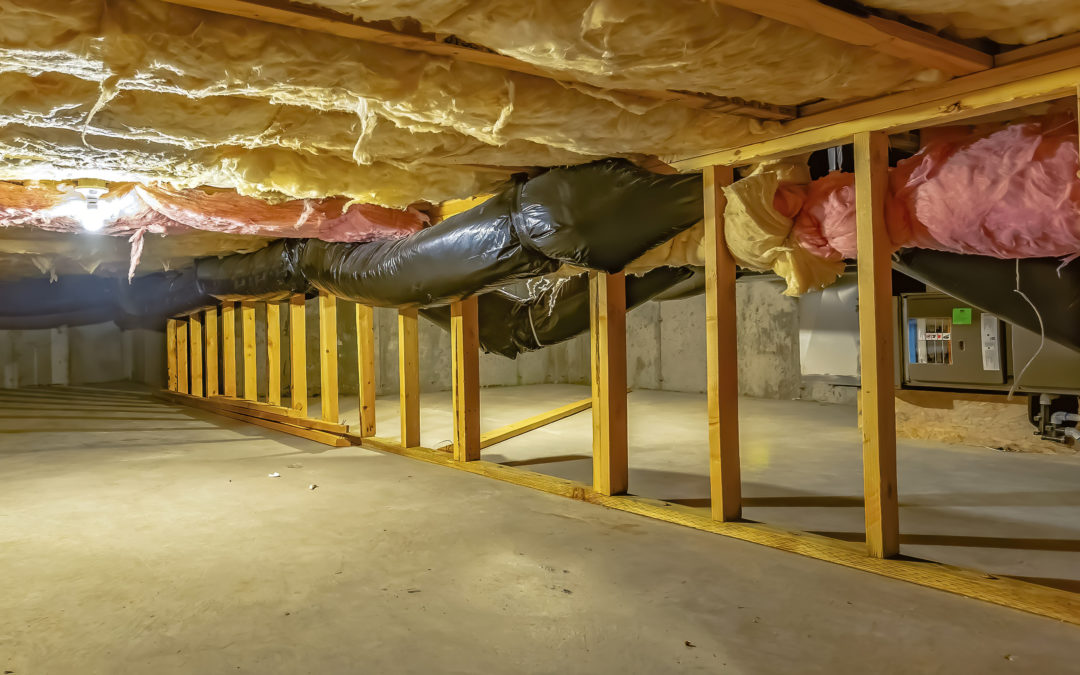Let’s face it. Crawl Spaces are an overlooked part of our homes that often aren’t used for much. But what are we missing by not using and caring for these spaces in our home? With around 15% of single-family houses containing some form of a crawl space, you may have one now and not use it. We’ll take a look at what you need to know about crawl spaces and what to look out for when using one.
What is a crawl space?
The primary use of a crawl space is to provide a buffer between the ground and the living space of a home. Most crawl spaces are ventilated and the air is free to move out and through the space. This usually has a nice effect on the comfort in the living space above by helping regulate temperature.
The crawl space also functions well as an access point for electrical, gas, and ductwork for the first floor of a home. Should you need to work on any of these while snowed in, the crawlspace makes these utilities easier to access.
Crawl spaces come in encapsulated and non encapsulated variants.
Improvements for Your Crawl Space
If needed, a great first improvement is installing a vapor barrier to encapsulate your crawl space. This will stop moisture from accumulating within the space and provide a safer location to store household goods and items more susceptible to damage from moisture.
Another improvement is insulation installation. This will help with severe temperature fluctuations and provide a more accessible space if maintenance needs completion during winter and summer.
Maintaining your Crawl Space
There are many maintenance items to be wary of for your crawl space.
The most important maintenance to be considered within this space is controlling moisture. Moisture will not only damage items stored in the space but could also lead to health-threatening conditions in the home from mold and poor air quality. A vapor barrier is a great way to minimize moisture in the space.
Check for cracks in the outside facing walls as well. Any damage that goes through the wall may result in moisture seeping in from the outside air. Check for leaking pipes, ducts, or condensation as these will all contribute to the overall moisture in your space.
Crawl space maintenance is important, as the types of damage that can result from poor maintenance are pricey and may take extensive time to repair.
Crawl Spaces as Storage
Unfinished crawl spaces may be used as storage but you’ll be limited to items that aren’t easily damaged by moisture. Encapsulated spaces with insulation may be used for the storage of a greater number of items and provide more climate benefits for the living spaces above.
What else should I use my crawlspace for?
Crawlspaces provide easy access for HVAC installation, running pipes, electrical components, ducts, and miscellaneous home utilities. The small size of even the roomiest spaces restricts what can be done with them, and they shouldn’t be used as a substitute for any of the living space in your home.
Crawl spaces are an overlooked part of most homes, but they’re great for easy access to maintenance tasks, electrical repairs, HVAC, and ductwork. When properly equipped, crawlspaces are great for storing most household goods, and at worst, building materials and non-moisture sensitive items can be stored in one.
Columbia CrawlSpace
So you’ve got a great crawlspace and need to know what it takes to encapsulate it or if any maintenance needs to be done. Columbia CrawlSpace has you covered!
Columbia CrawlSpace provides the best in crawl space repair and insulation, foundation repair, driveway repair, and more. Inspections and estimates are always free and you’ll know exactly what your crawl space needs if it needs anything at all!
Questions? Ready to set your crawlspace up for more? Check out Columbia’s site here – Columbia CrawlSpace

Recent Comments